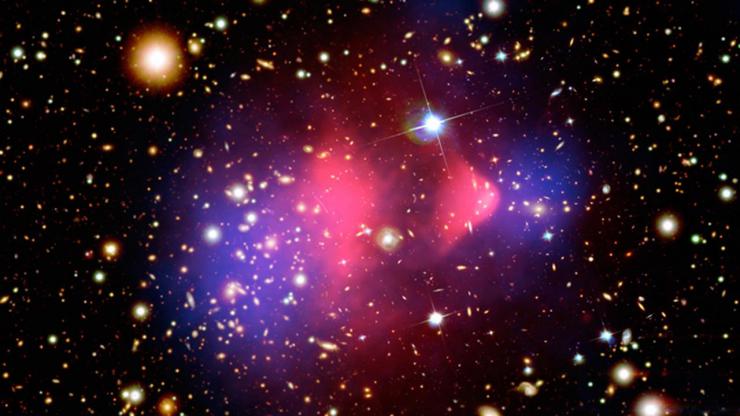- By Marcus Woo
Space can be a violent place. Asteroids and comets slam into planets, stars explode – or they are ripped apart by black holes.
But in terms of scale, perhaps nothing is as violent as the collisions between huge clusters of galaxies.
These cosmic conglomerations typically contain hundreds of galaxies – each boasting billions to trillions of stars – bound together by gravity. When one cluster gets too close to another, their mutual gravity yanks them together. The resulting collisions are huge, generating more energy than any other event since the Big Bang.
One of the biggest and most famous is the Bullet Cluster, which involves two clusters – and more than a thousand galaxies in total – in mid-crash. The impact is so strong that it created a huge, bullet-shaped shockwave, earning its name.
Sure, the wreckage is impressive. But astronomers aren't just rubberneckers leering at spectacle. What's caught their attention is that the collision has uncovered the invisible: dark matter.

(Credit: X-ray: NASA/CSC/CfA/M. Markevitch et al; Optical: STScl/Magellan/U. Arizona/D. Clowe et al; Lensing map: STScl/ESO/WFI/Magellan/U. Arizona/D. Clowe et al)
Dark matter is thought to be the glue that binds the clusters together, forming the gravitational foundation of stars, gas, and galaxies throughout the Universe. It comprises a quarter of the cosmos, yet it's not visible and no one knows what it is.
But thanks to the Bullet Cluster, scientists can enjoy a front-row view of the mysterious stuff. The collision has exposed the dark matter, separating it from the regular matter of stars and gas – producing one of the best pieces of direct evidence that dark matter really exists.
"It is my favourite object in the Universe," says Marusa Bradac, an astrophysicist at the University of California, Davis, in the US.
And that's not just because of what it's telling scientists about dark matter. The cluster serves as a versatile tool, helping researchers study some of the first galaxies that ever existed. It's also a cosmic laboratory where physicists can study the fundamental behaviour of hot, electrically charged gas called plasma.
(read the full story on the BBC website)
Published: December 16, 2015, 10:29 am

